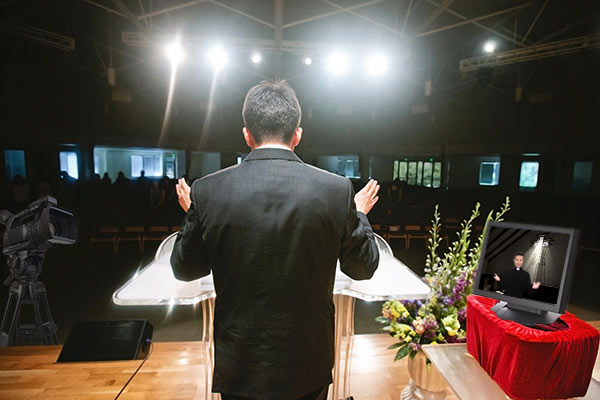Boosting Cross-Platform Playback Quality With nDVR for MPEG-DASH

From its inception, network digital video recorder (nDVR) has added flexibility to live-streaming scenarios where part of the audience might be running a few minutes, or a few hours, behind. Wowza first introduced their nDVR solution back when Real-Time Messaging Protocol (RTMP) was still in its prime as the primary live delivery protocol. The original version of nDVR used a proprietary Wowza format but now the most recent version of Wowza Streaming Engine software (4.7.6) has a much-requested feature: nDVR functionality for the standards-based MPEG-DASH.
Dynamic Adaptive Streaming via HTTP (DASH) was ratified by the Moving Pictures Experts Group (MPEG) several years ago. It has seen significant traction in Europe as a unifying standard for delivering streams as a series of thousands of small files (sometimes called “chunks” or “segments”) to be played back in sequential order, albeit with a slight delay: a process known as adaptive bitrate (ABR) streaming.
The nDVR function of Wowza Streaming Engine allows applications using MPEG-DASH to implement time-shifting functions for live content, such as play, pause, rewind and “jump to live.” This enables a variety of playback options from a single streaming workflow, while aligning with global broadcast standards for ABR streaming.
Wowza MPEG-DASH nDVR Allows a Speaker to Be in Two Places at Once
Over the past six years, I’ve personally worked on several projects that would have benefited from support for nDVR functionality for MPEG-DASH—including a memorable one from several years ago in the house-of-worship market. In this project, a church with two campuses needed to add time-shifting capabilities. Our use of the Wowza nDVR functionality allowed the pastor to speak in two places at (almost) the same time.
Since the two church campuses were in the same region, the lead pastor spoke from one location, and sent out two separate live streams of his sermon: One higher-quality version was sent to the second church campus for its Sunday morning service, and another lower-resolution stream was broadcast online for remote congregants. We initially thought this workflow could be accomplished with a simulcast live stream. But each campus had its own worship and praise band, as well as its own musical portion of the service—and these musical segments would have to be synchronized if we were to do a simulcast stream.

By adding the nDVR function to our proposed solution, the pastor’s sermon could begin streaming live from the campus where he was preaching; be stored in the network DVR; and then played back at the remote campus when their worship band completed its musical set. The time-shift could be either one minute or several, giving the technical team at the remote location complete flexibility on when to start playback.
However, there was a technical limitation to this approach: By nature of being network-based, playback in this workflow was at the mercy of network congestion. If MPEG-DASH nDVR had been available at the time, we would have used it in this implementation; the church could have avoided buffers and poor playback caused by excessive network load, and provided congregants with a more consistent viewing experience.
The beauty of the recent MPEG-DASH-supported nDVR functionality—or of any HTTP-based, segmented delivery approach—is that multiple variants of the same content, with different levels of quality, can be streamed simultaneously. In practical terms, this could be two 1080p variants, each at a different data rate; one 1080p and one 720p variant; and so on.
The choice of available variants is controlled by the manifest file (in Apple’s terminology)—or, for DASH users, the “Media Presentation Description (MPD)”. With nDVR recording all variants, the practical result is more consistent playback, should network congestion occur. This is because the ABR process forces the player to switch between variants mid-stream.
While these benefits are shared by all ABR-based technologies, MPEG-DASH nDVR brings the added benefit of industry-wide acceptance and backing by the MPEG standards committee.
MPEG-DASH nDVR Paves the Way for the Future of Streaming Delivery
As mentioned, MPEG-DASH has seen quite a bit of traction in Europe. That’s thanks, in no small part, to the fact that MPEG-DASH is central to the Hybrid Broadcast Broadband TV (HbbTV) specification, which is widely leveraged across the continent. Between the HbbTV 2.0 specification and the newer Advanced Television (ATSC) 3.0 specification, with its pure IP-camera delivery, DASH should continue to see additional traction.
“DASH formats play a central role as the encapsulation and delivery format, in the context of ATSC 3.0, for broadcast, broadband and hybrid delivery,” an IBC 2017 abstract notes.

But the use of nDVR with MPEG-DASH functionality in Wowza Streaming Engine isn’t limited to just houses of worship or broadcast scenarios. We are witnessing a merger of over-the-top (OTT) content delivery and traditional broadcasting. As this continues, the need to provide nDVR functionality for a “live/on-demand” approach will be critical for any number of online video platforms (OVPs) seeking to differentiate delivery. And it must be differentiated not only for multiple device types, but also when delivering live content across multiple time zones or regions of the world.
The benefit for OVPs is that their customers, in turn, will be able to offer their own end users the ability to pause, rewind and fast-forward all types of live and on-demand content. End users will also be able to jump ahead to the live event stream once they’ve caught up on what they missed.
With advanced nDVR functionality for both HLS and MPEG-DASH, Wowza Streaming Engine is setting the stage for future innovations in streaming delivery.
Don’t have Wowza Streaming Engine yet? Sign up for a free trial today.
FREE TRIAL
Live stream and Video On Demand for the web, apps, and onto any device. Get started in minutes.
- Stream with WebRTC, HLS and MPEG-DASH
- Fully customizable with REST and Java APIs
- Integrate and embed into your apps




